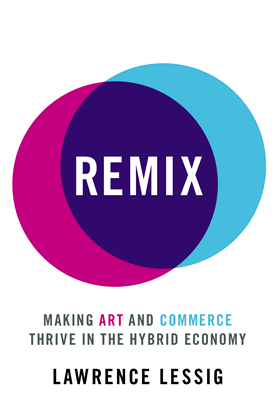I really like Maria Bamford. She’s brilliant and not enough people know about her. That seems to be the case with the comedians I find most impressive. I like Louis C.K. but what’s the big deal?
Note: comments turned off as spam prevention measure.

I really like Maria Bamford. She’s brilliant and not enough people know about her. That seems to be the case with the comedians I find most impressive. I like Louis C.K. but what’s the big deal?
Note: comments turned off as spam prevention measure.
 Reading slowly has its advantages. In general, I’m a good copy editor. And I know what you’re thinking: if that’s so, why are there so many typos on your website?
Reading slowly has its advantages. In general, I’m a good copy editor. And I know what you’re thinking: if that’s so, why are there so many typos on your website?
There are two issues here. First, there is the cleaning paradox: people never see the spot you cleaned, only the spot you missed. In other words: typos stand out. What’s more, you probably miss five typos for every one you do see. (Be honest: would you have noticed if I had used “everyone” in that last sentence?) Second, I don’t copy edit this site; I read through the article once and if it seems okay, I click the “Add Item” button.
Major Publishers
Recently, I’ve been noticing a lot of errors in books by major publishers. In particular, I have noticed a lot of mix-ups with “then” and “than.”
This is the kind of stuff that separates the good editors from the mediocre. Everyone knows to check their “there/their/they’re” and “two/too/to” and “for/fore.” But they seem to forget about this one. And it drives me crazy!
So let’s get this straight. “Than” is mostly a preposition. It is used to compare objects: he is smarter than I; not, he is smarter then I. “Then” is mostly an adverb. It is used to sequence things: he got the job I wanted, then he got the girl; not, he got the job I wanted, than he got the girl. (I know: it doesn’t feel like an adverb; it modifies got: he then got; it describes how he got the girl: after he got the job. Confused? Good.)
I have problems hearing words with great clarity. This has caused all kinds of problems throughout my life, many of which I deal with to this day. And yet, the words “then” and “than” are very clearly distinguished for me. You do this, theeeeen you do that; you’d rather do this thaaaaan that. I don’t know if that will be helpful to other people. The other obvious suggestion (one I don’t find very helpful in my own life) is just to memorize the difference.
I’d like to see this confusion go away. It really does annoy me more than it ought. But I suspect that if I read all the articles on this site, I would find that I’d made this mistake many times. Feel free to email me any you notice.
This is a nice short video about calenders. I’m posting it, because I’m working on other things that are keeping me from working on articles for this site.
Jonathan Chait notes that the Republican primary is turning out to be a lot like an episode of The Simpsons:
 I finally got around to watching Samurai I, the first film of the Samurai Trilogy. You may recall that I discovered it while watching the documentary The Cats of Mirikitani[1] where Mirikitani rents the film and watches it—a great symbol of just how much his life has improved. I am always open to a new Toshirō Mifune movie, and what’s more, I’ve been watching any Japanese film I can find recently. Despite the title, however: this is a love story.
I finally got around to watching Samurai I, the first film of the Samurai Trilogy. You may recall that I discovered it while watching the documentary The Cats of Mirikitani[1] where Mirikitani rents the film and watches it—a great symbol of just how much his life has improved. I am always open to a new Toshirō Mifune movie, and what’s more, I’ve been watching any Japanese film I can find recently. Despite the title, however: this is a love story.
The film starts with Takezo (Mifune) convincing his friend Matahachi, to run away to war with him for the glory of it. Matahachi does so, even though he is betroved to Otsu. The war doesn’t go well, and afterward, the two end up hiding out on the farm of a widow and her daughter. Eventually, Matahachi goes off with the mother and daughter and marries the daughter. Good riddance with that plot. This is when the movie starts to get good.
Takezo returns to his village to tell Matahachi’s mother that her son is not dead. This all gets uncomfortable, because Otsu wants to know why he is alive and yet not home, with her, getting married. Meanwhile, the whole village is searching for Takezo who is wanted for treason. Unfortunately for them, Takezo seems to be able to beat any group of up to ten men. In all the comings and goings, Otsu and Takezo slowly fall in love.
The only person who manages to capture Takezo is the priest Takuan, who convinces him to turn himself in—twice! The first time, Otsu helps Takezo to escape. The second time, the priest tricks Takezo into studying so as to control his wild nature, but he convinces the two young lovers that they will be together after his years of study are over.
After Takezo becomes a Samurai (three years later), he is sent on a trip to continue his education. Otsu begs him to take her with him. He says he will, but when she goes to pack, he disappears, leaving here a message: “Soon I will be back. Forgive me.”
It is a beautiful ending. It isn’t all that sad, because this is a trilogy, and I figure they will finally get together at the end of Samurai III. I will let you know.[2]
[1] I can’t see this title without thinking of Bruce Cockburn’s wonderful and horrific The Mines Of Mozambique off The Charity of Night album (sorry, the song isn’t available by itself):
[2] Wikipedia has a synopsis of the film, but whoever wrote it didn’t watch the film very carefully. They seemed to miss the main aspect of the film: the relationship between Takezo and Otsu.
 Regular readers know how much I like Aristophanes—at least English translations of him. Over 2000 years before the Elizabethan playwrights, he knew how to write a comedy. And none of them did. I think we have to get all the way out to the Restoration before we get a really good comedy in Great Britain, but don’t hold me to that, that’s just what I think off hand.
Regular readers know how much I like Aristophanes—at least English translations of him. Over 2000 years before the Elizabethan playwrights, he knew how to write a comedy. And none of them did. I think we have to get all the way out to the Restoration before we get a really good comedy in Great Britain, but don’t hold me to that, that’s just what I think off hand.
If anyone knows a little about Aristophanes, they will know that he wrote Lysistrata. In this play, the title character convinces the other women of the various Greek city states to withhold sex from their husbands to get them to end the Peloponnesian War. It is a brilliant idea that is well executed. What’s more, modern viewers generally find it very enjoyable to watch. And most of all, it is far more evolved in its thinking of women and sexuality than much of the modern Republican Party.
Lysistrata may have been written almost 2,425 years ago, but the Lysistrata ideal is alive and well in the form of the wife of Virginia Del. David Albo. Watch:
Ha cha cha cha!
 I have a problem with water faucets.
I have a problem with water faucets.
When I see the blue and red color-coding, I freak out. Right now, I’m setting comfortably at my desk, so there is no problem. The blue means cold water and the red means hot water. As everyone knows.
But when I was a physics undergraduate, I was taking upper division mechanics from Professor Joe Tenn. One day in class, he mentioned that he had been at a health club taking a shower and he noticed the blue and red color-coding. It was strange, he said, because blue light has more energy (per photon) than red light. And so it made sense that blue would indicate hot water and red cold water.
He knew, of course, that red indicated hot water because fire was red. And blue indicated cold water, because—the logic kind of falls apart here—blue stands for water and it is cooling and thus cool. But this didn’t make the faucet color-coding any less frustrating—for him, at least.
The truth is, that when Professor Tenn said this in class, I wasn’t that clear about photon energies and such. Not like now when I have the Planck constant memorized to 6 significant digits, despite myself. Graduate school was when the problem first occurred. That’s when light really became important to me—largely because my entire PhD dissertation was about atmospheric light scattering.[1] That was when I started to think like Professor Tenn had taught me.
At first, there was no problem. But after a while, the “blue has more energy” logic became self evident. Just like the “fire is hot” logic was before. And then my usual meta-logic of “faucets use the logic that is obvious” started to fail me.
Now, I freak out when I look at a faucet. But if I manage to remain calm, I can work it out. But now, my meta-logic is, “Faucets use the logic that isn’t logical.”
[1] Stay tuned for my explanation of why the sky is blue. It is not the standard explanation about blue light scattering more than red. This is true, but that’s doesn’t go very far to explaining the things we see. For that, you need just a little atmospheric chemistry. I promise it won’t hurt. Much.
 This is Laura Cantrell. She’s great. But the question is: who does she remind you of? It’s taken me a while to realize that her voice is identical to Suzanne Vega. Of course, she’s a country singer, but the kind we liberals like—people who remind us of Nanci Griffith.
This is Laura Cantrell. She’s great. But the question is: who does she remind you of? It’s taken me a while to realize that her voice is identical to Suzanne Vega. Of course, she’s a country singer, but the kind we liberals like—people who remind us of Nanci Griffith.
Here first album, Not the Tremblin’ Kind, is uneven; but its highs are great. In particular, the song The Whiskey Makes You Sweeter is a treasure. She gets less country on the next two albums that are probably her best: When the Roses Bloom Again (the title song is in the video below) and Humming by the Flowered Vine. Trains and Boats and Planes is an album of covers and as such is really good. Her most recent, Kitty Wells Dresses: Songs of the Queen of Country Music is a return to her roots, but it doesn’t work very well for me.
Upcoming
I’m working on a few articles, but I’m too tired to actually write them. Anyway, I’m trying to pace myself.
 I’ve written before about Melveena McKendrick’s exceptional biography, Cervantes. I just want to finish it off by providing a few quotations that I thought were very good.
I’ve written before about Melveena McKendrick’s exceptional biography, Cervantes. I just want to finish it off by providing a few quotations that I thought were very good.
Probably the most important thing I learned about Cervantes in this book is that the portrait of him (seen on the left), is not him.
This picture is the Juan Martínez de Jáuregui y Aguilar (Jáuregui) portrait of Miguel de Cervantes. Or so it is said. There are three major problems with the painting. First, Jáuregui would have only been 17 when he supposedly painted it. Second, he spells his name in a way he never spelled it. And third, he spells Cervantes name as it was never spelled.
The whole thing comes from the fact that in the Preface of Novelas Ejemplares (Exemplary Novels), Cervantes wrote:
According to McKendrick (p. 278):
We do have some idea of what Cervantes looked like, from Cervantes himself in the same Preface:
In discussing Cervantes’ writing, I was struck by this passage about a writer’s need to balance expression and privacy (p. 102):
The Prologue to Part One of Don Quixote is very funny. In it, Cervantes makes fun of his own lack of erudition. It turns out, his actual target was Lope de Vega (p. 199):
The book is also very useful in providing a look at how Don Quixote was viewed in Cervantes’ time (p. 223):
Finally, McKendrick provides a good view of Cervantes at the end of his life when he was famous and respected, but poor (p. 252):
I highly recommend Cervantes. It is a very lively read about a colorful man. And unlike English writers of that time, we actually know quite a lot about him.
 I was thinking about Arlen Specter this morning.
I was thinking about Arlen Specter this morning.
It all goes back to my often stated observation that the policies of such conservative icons of the past like Ronald Reagan and Dick Nixon would place them well inside the mainstream of the Democratic Party. There is a caveat, however. Politicians operate in the environment in which they find themselves. This is especially true of conservatives. So if Reagan and Nixon were in politics today, they would have far more extreme views than they held when they were in power.
This brings us back to Arlen Specter. Most politicians don’t really believe in anything. I know that’s cynical, but how else do you explain the vast majority of the conservative movement whose members almost never get outside the mainstream of the party? Last year they were in favor of birth control; this year, they stop on a dime and reverse themselves. Specter is an exception.
When he decided to run in the Democratic Party, his views were well inside the mainstream of the party. In fact, they’d been so for a while. I understand why the Pennsylvania Democratic voters rejected him. But he wasn’t just doing a political calculation when he changed parties. He was right when he said, “As the Republican Party has moved farther and farther to the right, I have found myself increasingly at odds with the Republican philosophy and more in line with the philosophy of the Democratic Party.”
What is surprising is that so few Republicans do the same. Despite what it says, the Republican Party is an extremely small tent. The Democratic Party, by contrast, is a big tent; just look at the Blue Dogs. Just look at Arlen Specter, who despite his reputation is still very conservative.
Thought for the day: how is it that Barry Goldwater, so extreme that he almost tore apart the Republican Party in 1965, was to the left of the party just ten years later?
Update
Ezra Klein has a good article this morning:
Of course, Klein falls into some false equivalence too. It is wrong to compare Democratic compromises (e.g. lack of a public option) to Republican wholesale reversals (e.g. opposing their own long-time private insurance healthcare reform). As good as Klein is, he is part of the problem.
Update 25 February 2012
Brad DeLong says much the same thing about Ezra Klein’s article, but better:
But the Democratic Party changed policy when conditions changed, and new information came to light…
But there are differences in honesty and intellectual consistency as far as their commitment to substantive policies are between the two parties.
And by not stressing those differences, in my view Ezra contributes to a problem.
 A friend told me that she was going to punish her girls for fighting by having them write a song about sisterhood. Yes, she is a cruel woman. This caused me to do a Google video search on the phrase “sisterhood song.” It turned up this. (Don’t click on it!) I wasn’t ten seconds into it before I had to stop it. It was that bad.
A friend told me that she was going to punish her girls for fighting by having them write a song about sisterhood. Yes, she is a cruel woman. This caused me to do a Google video search on the phrase “sisterhood song.” It turned up this. (Don’t click on it!) I wasn’t ten seconds into it before I had to stop it. It was that bad.
I was just trying to help and just look what happens. I offered up some potential lyrics the girls might use. I thought she might be looking for something along these lines: “See my sister / See her shot! / See you sit / And stink and rot!” Surprisingly (or not) she indicated that this was exactly what she was looking for.
Marvin Gaye
In order to detox from listening to ten seconds of “Sisterhood Song,” I turned to a master.
The video below is an amazing live version of Marvin Gaye’s What’s Going On from the DVD Marvin Gaye: The Real Thing – In Performance 1964-1981. As I was watching it, I noted that the video had been voted, “26,970 likes, 304 dislikes.” I thought, “What the hell?! How could 304 people dislike this?” I’m sure that the people who clicked “dislike” were not really discerning listeners. Instead, I suspect they were people who like a different kind of music. What’s more, I’m sure they are people who only like one different kind of music.
I was encouraged to note that the top rated comment by W1nky13 was, “302 dislikes, WTF, There sure are some losers out there, this is the best fuckin video on youtube.”
 I’ve been working on an internet video series called The Post, Post Modern Comedy Hour. It’s kind of a kids’ show for adults. And part of it involves a group of people watching TV commercials. It is one of the best parts of the shows. And thus, it has been bugging me because I don’t know if we can get away with doing this without getting the rights to the commercials. On the one side, I would think the companies who made the commercials would like the extra viewings. After all, people don’t pay to watch commercials; watching commercials is how people pay for otherwise free content. But on the other side, these companies are evil.
I’ve been working on an internet video series called The Post, Post Modern Comedy Hour. It’s kind of a kids’ show for adults. And part of it involves a group of people watching TV commercials. It is one of the best parts of the shows. And thus, it has been bugging me because I don’t know if we can get away with doing this without getting the rights to the commercials. On the one side, I would think the companies who made the commercials would like the extra viewings. After all, people don’t pay to watch commercials; watching commercials is how people pay for otherwise free content. But on the other side, these companies are evil.
Last night, despite myself, I read another Lawrence Lessig book. This time it was Remix: Making Art and Commerce Thrive in the Hybrid Economy. It opens with the story of Stephanie Lenz, who posted a 29 second video of her son dancing to Price’s Let’s Go Crazy playing on the radio in the background. This was unacceptable to Universal Music Group, which had the video removed from YouTube and threatened a $150,000 fine.
So much for my thinking that I could show short pieces of commercials on a TV in a room. Never mind that the TV screen would likely never take up more than a quarter of the screen. Never mind that both the picture and sound quality would be awful. As Lessig documents over and over in his book, they will do it because they can. They will do it (unconvincingly claiming that it is) for the sake of principal. It is an outrage. As I’ve written many times before, copyright is out of control.
Lessig proposes a plan forward—a way to fix the current system. Unfortunately, I am far more cynical than he is. We are already at a point where artists are worse off than they were in the time of Cervantes and Mozart. I may have to find a patron just to produce a silly, fun, totally inoffensive romp that I want to give away to the world.